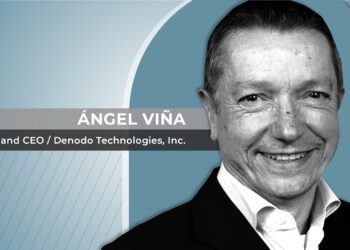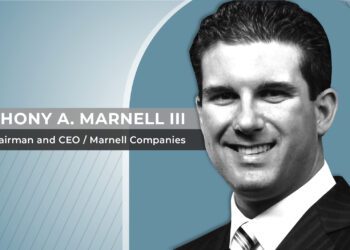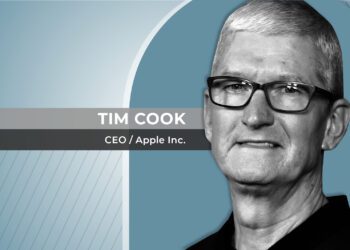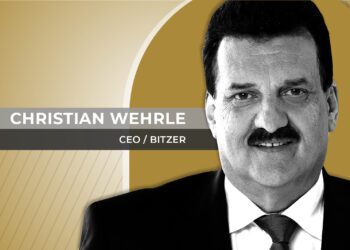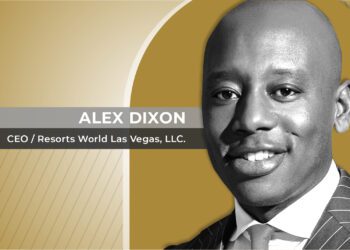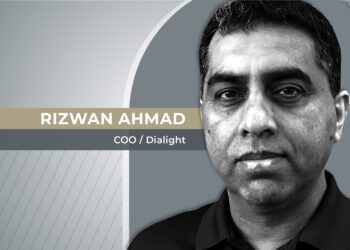Before he was appointed CEO of Hibbett, Mike Longo served in the military and spent many years in retail at AutoZone and then City Gear. Those experiences taught him that the culture of an organization and the way its people conduct themselves matter. “It’s probably the thing that matters the most and it’s about how people behave without being told what to do on a daily and moment-by-moment basis,” Longo told CEO Magazine North America in an exclusive interview. “In my experience, if you can define the culture of an organization and then live it, it matters.”
These lessons were crucial in bringing Hibbett through a difficult first year of the pandemic which forced other retailers to close and saw economic uncertainty impact countless companies. “The main question in March 2020 was how do we take care of our people the best we can during the pandemic and keep them and our customers safe,” Longo recalled. “We bridged many associates’ pay during the pandemic, and it kept them loyal. We kept them as part of the team and so when the business came back with a roar, we had a team. They were motivated. They were happy to be there.”
Birmingham, Alabama-based Hibbett, which publicly trades on NASDAQ, is a leading athletic-inspired fashion retailer with 1,080 Hibbett Sports and City Gear specialty stores nationwide. Hibbett and City Gear retail stores are located in small to mid-sized markets, primarily in the Southeast, Southwest, and lower Midwest regions of the United States. The stores offer a range of hard-to-find, high-end footwear and apparel from brands like Nike, Jordan and adidas. In FY2021, the company posted revenue of $1.4 billion.
For Longo, who formerly owned City Gear, now a subsidiary of Hibbett, the footwear and athleisure industry is as much a passion as a vocation. “It’s an industry I understand,” he said. “The reason I understand it is because I bought City Gear in 2006 and have been a participant in the industry through a more entrepreneurial slant. We sold City Gear to Hibbett in 2018, so not only did I have a very strong understanding of the industry, but I also had a decent understanding of Hibbett, having worked there for a year before I transitioned to the CEO role. I believed—and still believe—that Hibbett has done a tremendous job investing in its people.”
SECOND TO NONE
Since launching their e-commerce site in 2017, Hibbett has put together an omnichannel experience that is second to none. Hibbett offers a full suite of omnichannel services to its customers including options to buy online and pickup in store, reserve online and pickup in store, buy online and ship to store, curbside pickup, and ship from store. Hibbett has also invested heavily in its mobile app technology, the most notable feature of which is the Raffle, which is used to manage all the company’s footwear launches. Customers download the app to enter the raffle. If they are selected as a winner, the customer follows an easy process to pick up and pay in their local store. This feature has been extremely popular among “sneakerheads,” which is a key customer group for the company.
“The Omnichannel platform is a best-in-class way of integrating the online business with the brick-and-mortar business,” Longo described. “We don’t compete with Amazon or Walmart, we’re a much more narrow niche. I felt the main challenge was to focus on a strategy with a speed-to-market emphasis and an emphasis on the team and their ability to get after that strategy and we set about that relatively quickly.
“What makes us unique is that we focus on three things: one is an underserved customer. We are not necessarily in Manhattan, we’re in medium and smaller markets,” he elaborated. “It’s about reaching that customer, who is underserved with regards to other retailers. Secondly, we’re incremental to our major brand partners’ business. We’re serving their underserved customers so that makes us uniquely positioned as compared to our competitors.
“And third, we’re complimentary to their business as well. If you think about how a brand goes to market, they go to market on their direct-to-consumer business on one brand. What we do for Nike and adidas is we bring their brands to life at the retail level and online. Not every customer wants to wear Nike from toe-to-head. They want to mix it with Levi’s or streetwear brands and accessories. That allows us to authenticate the brands at the retail level in a way that they can’t do themselves.”
THREE MAIN ENGINES
Longo sees three main engines to Hibbett’s post-pandemic growth. The first is to grow their Omnichannel experience at a relatively quick rate to complement their existing business. The second he describes as a ‘category offensive’ organized around men’s, women’s, and kids’ apparel with a view to unlocking additional sales in those categories. The third point is speed to market.
“Retail is really an extended supply chain and the faster we move the product to the consumer the better off we are and the better off the consumer is,” Longo emphasized. “The product that we sell has a very defined shelf life. Because of that, the speed the product can move through the supply chain is incredibly important.
“(So much of that is) identifying your key performance indicators, keeping them really simple and putting them in front of everybody at all times,” he said. “That not only allows us to understand how we’re doing, but it also helps us collaborate across departments. How to get people to cooperate. You take them to the higher goal and if we focus on those simple KPIs instead of the micro or department-level KPIs, I think that really helps pull the team together.”
EMERGING FROM THE PANDEMIC
Longo said a key example of how the team at Hibbett pulled together came during the COVID-19 pandemic. “There was an inflection point in the business during the pandemic because it allowed us to take those changes that we were putting in place and accelerate them,” he insisted. “Nobody wants to say that they took advantage of a crisis, but in the middle of a crisis you do the best you can do with the hand you’re dealt. And the hand we were dealt is that we had nearly 1,100 stores. We had over 10,000 people. But they came back motivated and at the same time, we had access to an entirely new set of consumers that we hadn’t necessarily had before.
“Once they trialed us, which is usually the hardest thing to do in marketing, they liked what they saw and we kept many of those customers. That became an inflection point on which we’ve built up the business and we’ve had significant growth over the past two years as a result.”
SUPPLY CHAIN EFFICIENCY
Supply chain efficiency matters greatly to Longo. At AutoZone, where he spent 13 years, he ran the company’s supply chain and quickly learned that increasing velocity and decreasing lead times was one of the most important aspects of doing business. “We have done a ton of work on our supply chain (at Hibbett),” he elaborated. “We’ve gone from a long lead time in terms of deliveries to the stores to a much more rapid delivery and increased frequency, which is vital. At the same time, we have been able to network our stores together so that we can move product between stores swiftly.”
“We have spent a fair amount of time with a select consulting group coming in and looking at our people, processes and systems. For example, we moved to parcel delivery which allowed us to increase the frequency and the speed of delivery. I’ve done a fair amount of consulting on supply chain and one of the things I’ve found is that people do a pretty poor job if they’re bound by the operating hours that they think they can run. And we found at Hibbett when we opened up the operating hours of our supply chain it gave us an instant boost in terms of capacity.”
“Right now, there are violent swings in the flow of goods for all the reasons we’re aware of,” Longo said of the current disruption to global supply chains post-Covid. “One of the ways that you can deal with that variability is through flexible capacity. We spend a fair amount of time with our major brand partners, looking at ways to collaborate and innovate through not only technology, but also just simple process changes. The other thing is network modeling. Where the product flows and how it flows from the factory all the way into the hands of the consumer.”
Returning to the concept of organizational ‘culture,’ Longo takes a pragmatic view, believing that the term is thrown around all too easily nowadays. “Everyone talks about culture but nobody really knows what it means or how to do it,” he offered. “(At Hibbett), there’s one culture and it flows all the way through the entire business. And it informs our people of how to work alongside each other. That really has been the most important thing we’ve done since I came here.”



